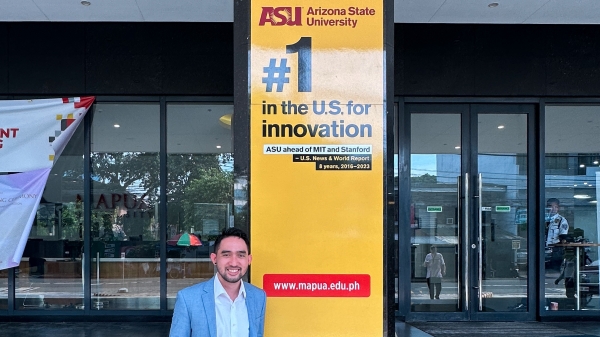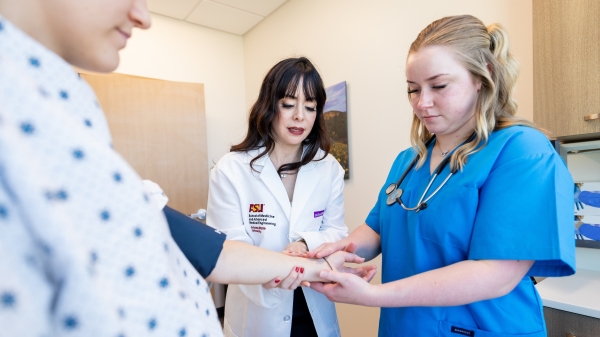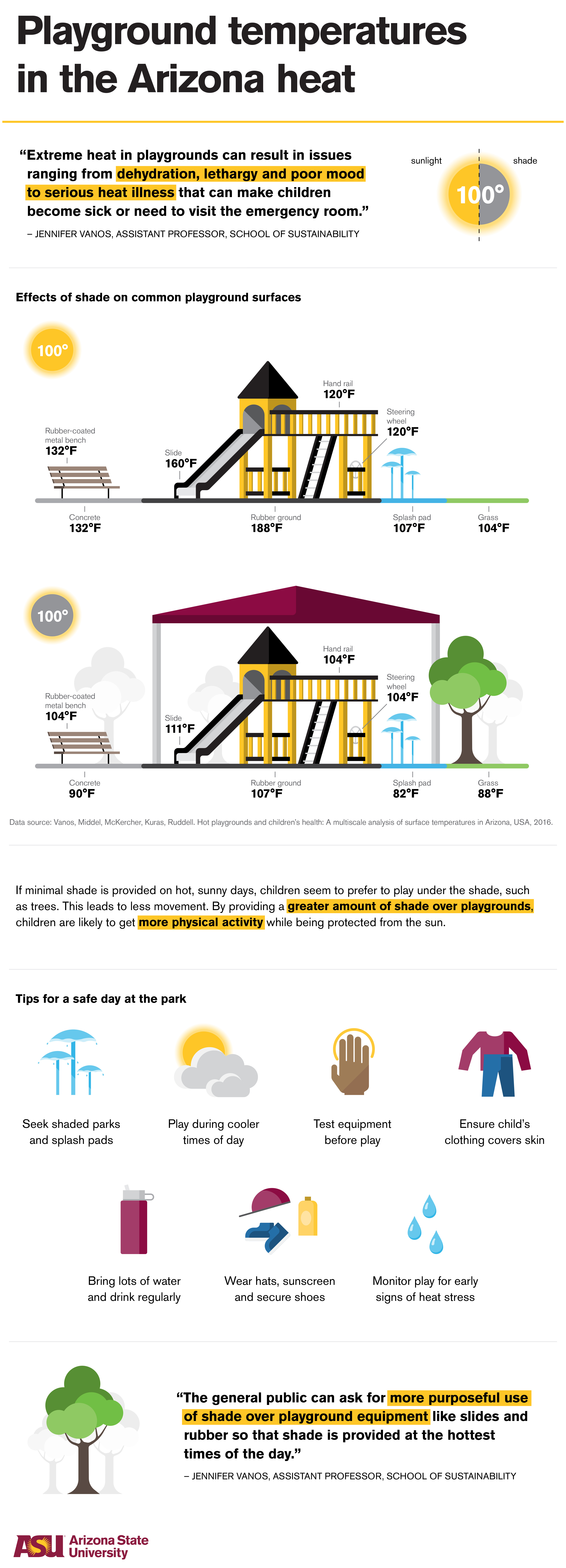Editor's note: As Arizona continues to battle COVID-19, please follow social distancing and face covering guidelines in public at all times, including playgrounds.
A day at the playground can be tempting on a bright sunny day, but in the Arizona heat, it can also be dangerous.
Children playing outside during Arizona summers can face 100 days or more of temperatures north of 100°F. Too often playgrounds use heat-retaining, unnatural surfaces in the middle of parks with no shade, especially in Phoenix. These unshaded playgrounds can act as mini heat islands, which can disincentivize physically active play or even lead to burns.
ASU urban climate researchers Jennifer Vanos and Ariane Middel believe proper shading of playgrounds may be a solution.
“Shade protects children from the sun and keeps playground equipment cool and touchable,” said Middel. Their research provides insight into these spaces, as well as tips on keeping children safe in the heat.
Infographic by Alex Davis/Media Relations and Strategic Communications
More Health and medicine

Linguistics work could improve doctor-patient communications in Philippines, beyond
When Peter Torres traveled to Mapúa University in the Philippines over the summer, he was shocked to see a billboard promoting Arizona State University.“It wasn’t even near the university,” said…

Turning data into knowledge: How Health Observatory at ASU aims to educate public
This is how David Engelthaler described his first couple of months on the job as executive director of the Health Observatory at Arizona State University:“It’s been a little bit of drinking from the…

HonorHealth named primary clinical affiliate for new ASU School of Medicine and Advanced Medical Engineering
Arizona State University and HonorHealth, a locally owned nonprofit health system, announced today that they have finalized an agreement for HonorHealth to serve as the primary clinical affiliate for…

